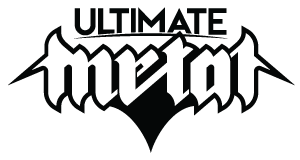SPDIF and ADAT ??
- Thread starter migreeni
- Start date
You are using an out of date browser. It may not display this or other websites correctly.
You should upgrade or use an alternative browser.
You should upgrade or use an alternative browser.
They are digital and optical connections. With ADAT, it uses an optical connection to transfer data as opposed to an analog cable transferring audio. An ADAT unit will have a converter to convert Analog sound into Digital format, and then another unit will convert that back to analog.
~e.a
~e.a
Ben Johnson
SSSSSSSSSSSSSS
Sony/Phillips Digital Interconnect Format and Alesis Digital Audio Tape.
They're just different interfacing formats that those companies developed. No single format really outdid the other, so they're both pretty common on most equipment today.
Basically, they're just different ways to get digital information from point A to B, sort of like USB or Firewire.
EDIT: I didn't realize ADAT had a converter...
They're just different interfacing formats that those companies developed. No single format really outdid the other, so they're both pretty common on most equipment today.
Basically, they're just different ways to get digital information from point A to B, sort of like USB or Firewire.
EDIT: I didn't realize ADAT had a converter...
Kazrog
Kazrog, Inc.
ADAT "lightpipe" is an amazing cable format in that it carries 8 tracks of digital audio on each super-thin fiberoptic cable. Saves a lot of hassle and cable routing. And it beats the fuck out of Tascam's competing clunky TDIF standard.
SPDIF is basically stereo digital RCA. Useful, it has its applications, but not nearly as impressive. Some older gear requires you to pair up SPDIF with coaxial word clock cables, which is annoying as fuck and no fun, as it doesn't always work properly in more complex setups. Most modern gear can transmit/recieve clock over the SPDIF cables themselves, thankfully.
SPDIF is basically stereo digital RCA. Useful, it has its applications, but not nearly as impressive. Some older gear requires you to pair up SPDIF with coaxial word clock cables, which is annoying as fuck and no fun, as it doesn't always work properly in more complex setups. Most modern gear can transmit/recieve clock over the SPDIF cables themselves, thankfully.
Loren Littlejohn
Lover of all boobage.
Basically how it helps you:
You could plug this (actually you could do 2 of these if you wanted):

Into this via ADAT lightpipe out for a total of 16 mic preamps (or 24 if you used 2 digimaxes):

But wait it gets better:
You could plug one of these (via S/DIF):

Into the Alesis for a total of 26 microphone preamps.
Basically it's a way of connecting digital devices together. I am unaware of S/DIF being able to carry more than 2 chanels of audio at a time (pretty sure thats all it can).
You could plug this (actually you could do 2 of these if you wanted):

Into this via ADAT lightpipe out for a total of 16 mic preamps (or 24 if you used 2 digimaxes):

But wait it gets better:
You could plug one of these (via S/DIF):

Into the Alesis for a total of 26 microphone preamps.
Basically it's a way of connecting digital devices together. I am unaware of S/DIF being able to carry more than 2 chanels of audio at a time (pretty sure thats all it can).
Loren Littlejohn
Lover of all boobage.
everybody's x
My name is Damage
so a sdif cable is just an RF shielded RCA right?
Im going to try out a VST system link between my motu and mbox rigs
Im going to try out a VST system link between my motu and mbox rigs
Noumenon
Obsidian Productions
everybody's x
My name is Damage
right, it can have a toslink or rca connector, the spdif toslink just does two channels though.
I am wondering if I can use a regular RCA cable to link my motus and mbox for vst system link
I am wondering if I can use a regular RCA cable to link my motus and mbox for vst system link
Loren Littlejohn
Lover of all boobage.
I think the SPDIF coax form can do more than two channels, just not in the sense that we would want it to... I used to use SPDIF on my DVD player to get 5.1 to my receiver.
Good point. But can you think of a device that can do this in recording? I can't but I get what your saying.
Good point. But can you think of a device that can do this in recording? I can't but I get what your saying.
Nope. I guess that it's just a mush of ones and zeros as it goes through the cable, and the receiver 'decodes' it into the 5.1 signal.... So technically there isn't really 6 audio channels going through at once....

